THEY say that horses can’t be too intelligent if they allow people to sit on their backs for more than a split second. But they can communicate though body language. American Monty Roberts was the first man to popularise talking and listening to horses, ask but now South Africa has its own horse whisperer.
Reverend Malan du Toit has been working with horses for at least eight years. He was first introduced to these “willing slaves of humans” by his wife, Finnie. The first time he set eyes on her, Malan never realised that his life as a city boy would radically change because of Finnie’s passion for horses. Neither would he realise that it would lead to a calling as strong as that of The Ministry.
Soon, Malan was persuaded to give up watching rugby every Saturday and start riding horses. He was to discover that he could interpret their body language and respond accordingly. Today he is a well-known horse psychologist in the Western Cape and many ask him to help retrain their damaged and difficult horses.
Malan says an important part of training horses is to teach them responsibility for what they do – to teach them “that what they do has either positive or negative consequences”. It’s also the same philosophy that he applies to bringing up his children. Recently Malan worked with two racehorses – Lupial and Jim Beam – with the aim of calming them down and making them comfortable with their surroundings. Under his expert handling, they both won races.
“I believe it is necessary to get the horses co-operation. I do that by speaking to them in the type of body language that they can understand – the language they use to speak to each other in nature,” said Malan.
Some training methods rely on the horse’s natural aversion for pain to beat it into submission. Some trainers traditionally tame horses by breaking their spirits, their wills subjected to the whims of the human trainer or owner. Many of the horses Malan works with are victims of these harsh methods.
Before humans first domesticated horses in the Ukraine in southern Russia, 5 000 years ago, they hunted them for food and their skins. Domestication saved horses from extinction and they have been humankind’s most reliable companion and willing slave ever since. Millions of horses died carrying their master into the battlefields of the world.
But the problem is that people still do not know how to communicate with horses.
The horse’s instincts tell it to run first, and ask questions later. To show the horse he is not a threat, Malan touches the animal on vulnerable spots, like its neck, flanks, and throat. The horse will then establish contact and the “join-up” will be completed. With this trust between man and horse, the horse will allow itself to be saddled.
This process will go on until the horse is calm and the contact well established. There is no pain involved and the horse has to be willing to allow the trainer to show it the way to go. The reason horses have attached themselves so easily to humans is that horses are natural herd animals – they like the company of other horses, or of people.
That is why a stabled horse without company can become very difficult to work with. The new-wave trainers of horses who have learnt the secret of body language can help these horses. Malan says that his work with horses has taught him a thing or two.
“It’s about creating opportunities for people to relate to each other; to join-up, to build relationships based on trust and respect, knowing the importance of body language, especially… and having a lot of patience,” said Malan.

